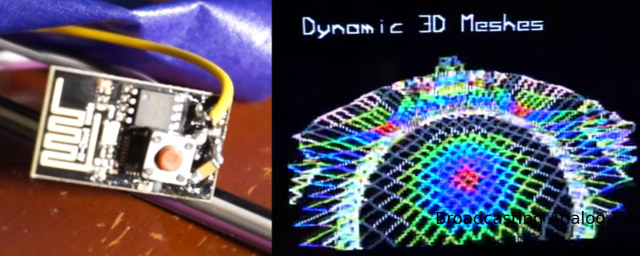You can do lots of things with ESP8266 WiFi modules, but CNLohr did something rather unexpected as he managed to use GPIO3/RX pin to broadcast NTSC signals first in black & white, and now in color, to his television’s channel 3.
On the hardware side, he did have to disconnect the WiFi antenna, and connected a wire antenna to GPIO3/RX pin. He then set I2S to run at 80 Mbps, and pushed data out using DMA buffers, so he could achieved the 61.25 MHz frequency required for NTSC luminance data, and the color data, 3.579MHz higher up. Once the demo is running, you can alter it on the fly using a web neat interface. This is all explained on channel3’s github repository, as well as one a 15-minute video showing the capabilities and limitations, and explaining how you can play around with the parameters.
Via ESP8266COM’s Tweet.

Jean-Luc started CNX Software in 2010 as a part-time endeavor, before quitting his job as a software engineering manager, and starting to write daily news, and reviews full time later in 2011.
Support CNX Software! Donate via cryptocurrencies, become a Patron on Patreon, or purchase goods on Amazon or Aliexpress





